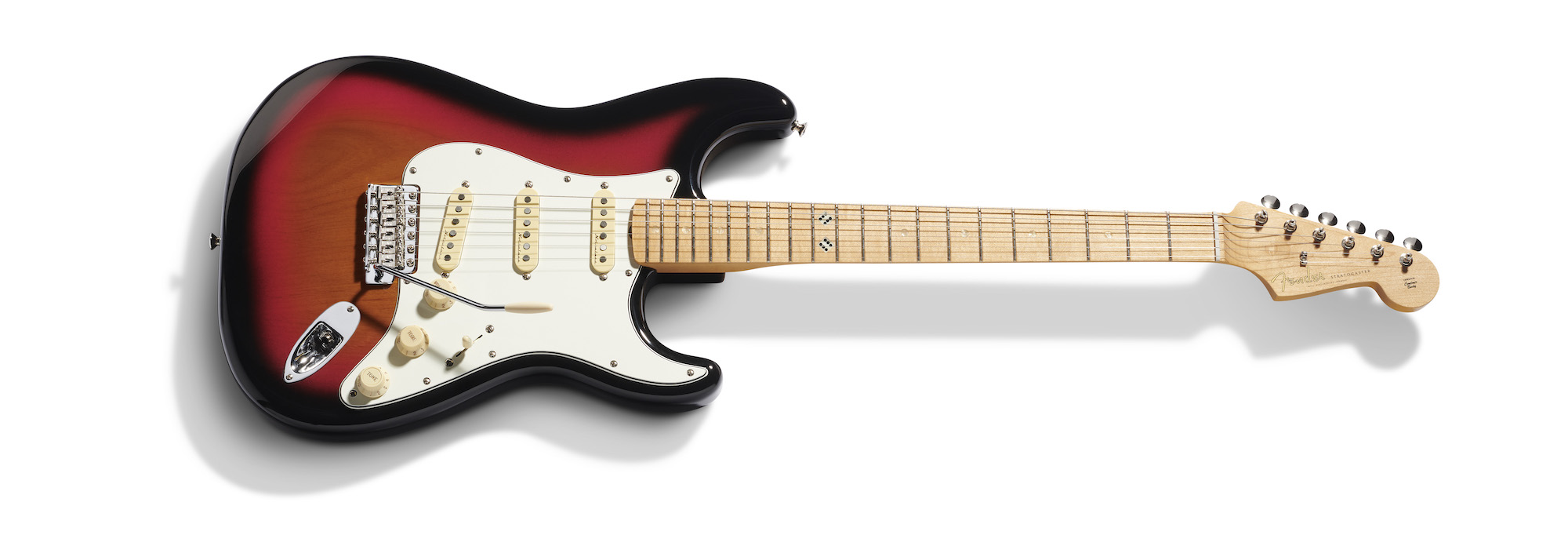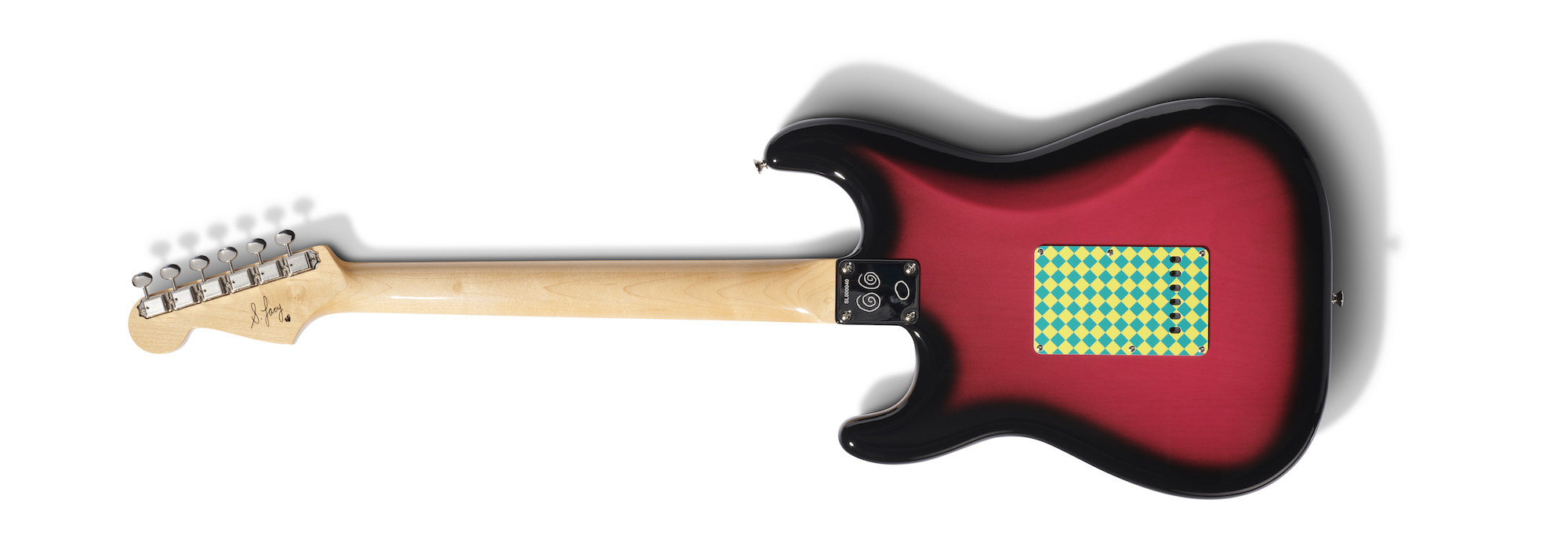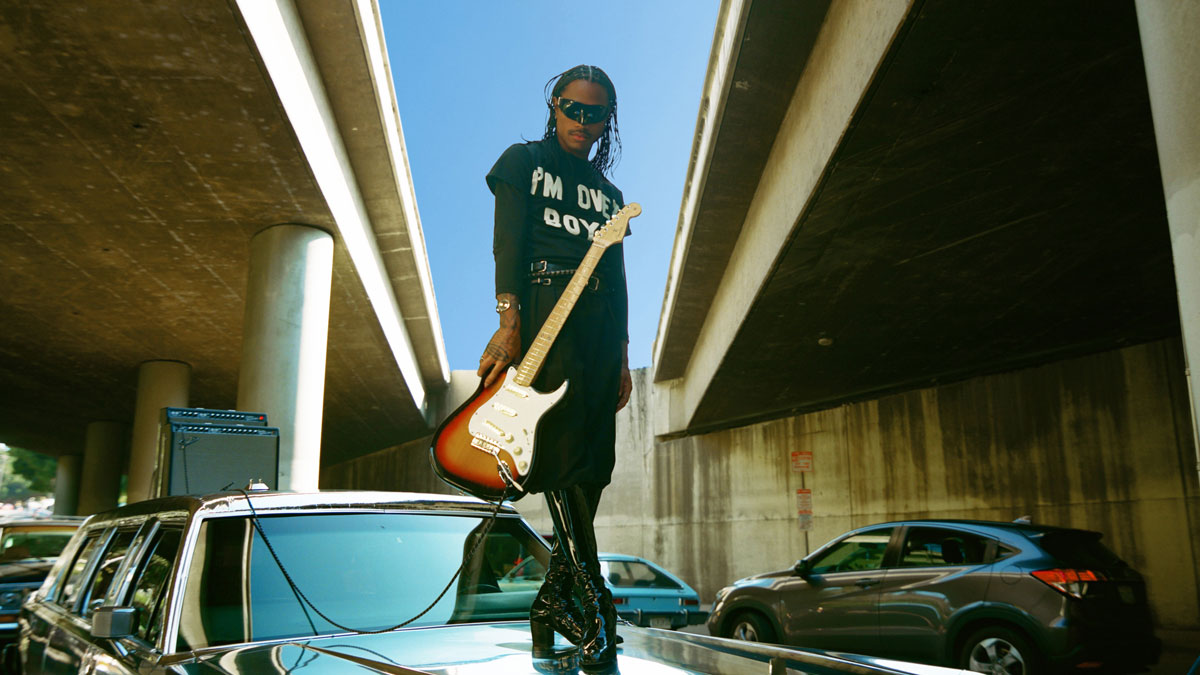Steve Lacy on how Jack White and Scott Pilgrim inspired his fuzz-equipped Strat, creating Fender’s first “pink sunburst” and why he loves affordable multi-FX pedals
The superstar guitarist/producer has worked with the likes of Kendrick Lamar and Thundercat, and topped the charts with “nerdy chords” – now he has a radical new signature Stratocaster, but as he reveals, the ideas that didn’t make the cut were even more off-the-wall

Though he’s only 25 years old, Steve Lacy has become one of the most in-demand guitarists working in modern hip-hop and soul.
As a musician and producer, his list of credits stretches as far and wide as Kendrick Lamar, Thundercat, Vampire Weekend, Calvin Harris, Solange Knowles and Tyler, The Creator.
He’s also released two critically acclaimed solo albums in 2019’s Apollo XXI and last year’s Gemini Rights, the latter of which won him his first Grammy and featured chart-topping single Bad Habit, which went viral on TikTok.
This year sees him partnering up with Fender for his debut signature Stratocaster, nicknamed the People Pleaser. The guitars comes in a striking Chaos Burst and feature an alder body, a 9.5” radius maple fingerboard, a modern deep C profile neck, narrow tall frets and Player Plus Noiseless single-coil pickups.
As for customizations, there are plenty to be found – starting with the double dice inlay at the 12th fret, the Lacy- designed artwork engraved on the neck plate, the green/blue checker patterned back plate and the fuzzy green interior of the matching vintage-style hardshell case.
But we’d be lying if we didn’t say the new model’s biggest talking point has to be the custom-voiced Steve Lacy Chaos Fuzz Circuit, which – unless you’re Matt Bellamy from Muse – is a rare appointment indeed.
“It’s a circuit that Fender developed for me,” Lacy explains, when he connects with Guitar World ahead of the launch of his first ever signature model.
Get The Pick Newsletter
All the latest guitar news, interviews, lessons, reviews, deals and more, direct to your inbox!
“I gave them a couple of reference points. I told them I liked Jack White’s tone [laughs] – as well as that Scott Pilgrim kind of sound. Those were the two main ones. I was also after a fuzz that still allowed me to hear my chords. I didn’t want something that would drown out what I was playing with all this distortion. Those were all the notes I gave them…
“And then Fender came back with what they made and I was like, ‘Wow! This sounds dope!’ Initially when I designed the guitar, I wanted to change the words on the buttons to things like ‘Sex’ and ‘Chaos’ – with the latter being for my fuzz circuit. But we couldn’t really do that. It was a cool idea, though!
“Mainly I just wanted to have a pedal built into the guitar. I use it a lot when I’m playing live, mixed with the distortions I already have, and it sounds amazing.”


What is it about Stratocasters that made you want to play them almost exclusively?
“I think the Strat is a good representation of my roots as a guitarist. When I think back to the people that I loved and looked up to when I was starting out, they were all rocking the Strats. Jimi Hendrix was one of the biggest influences on me back then. I was a young Black kid watching Hendrix rocking the hell out of his Strat and thought ‘Damn!’ I started out on a Squier, too, so it was only right that I’d end up working with Fender to have my own signature.
“I always loved the ’60s-style models, so ended up referencing that era in my guitar. I actually just got a 1966 Sunburst not long ago as a little treat to myself. That was always my dream guitar but I could never really get one, because they were and still are crazy-expensive. With my signature, I wanted to make something that was more like an affordable version. To think I have my own signature is pretty wild!”
And we can’t say we’ve heard of a Chaos Burst before!
“Yeah, it’s a new finish! The initial idea was to have a regular ’60s Strat with a back that was completely pink – so people would see it and then I’d turn around and there’d be this whole other vibe on the rear of the guitar. We couldn’t execute that in the affordable price range. The specs were almost wrapped up at that point.
“I really wanted this guitar to be as cheap as possible and with that kind of paint job, especially in this extra bright neon kind of pink, it would have been a lot more. So we arrived at this and I’m really pleased with how it looks. Chaos Burst is a bit like a pink Sunburst, which is very nice, too!”
You mainly seem to stick with Fender amps, too...
“Yeah, I keep it pretty classic. I like Fender Twin amps. I generally use Strats on stage, that’s what I’m rocking most of the time. There’s a guy called Eric who does my pedalboard – he has a shop in Highland Park, but I forget the name of it… sorry, Eric! He built my whole rig for me. I’m using some vintage pedals. My primary one, and I don’t really care if people shun things like this because they work so well for me, is a Boss ME-80. I’ve been using that for years.
“I like to mix the Boss multi-effects with old-school pedals, like this phaser I have from the ’70s. There’s also a distortion pedal that I like, which Eric built me in his shop. And then I have this Bee Gee fuzz pedal [Roland AF-60 Bee Gee] which is actually kinda broken right now. I’m not using it much recently and will probably replace it with a Morley pedal I’ve been trying out. There’s a Boss delay in there, too. That’s pretty much it. I like to keep things simple.”
You ended up co-writing and co-producing Kendrick Lamar track Pride back in 2017. How did you land the gig?
“All of this stuff happened pretty organically for me. During that time I was brought in by my friend DJ Dahi, who produces a lot of stuff for Kendrick. He invited me to come work on the album. We would have jam sessions together where he would stick on drum loops and I would play the basslines or guitar riffs. There was a moment where I was left alone in the room with Kendrick. I guess it was my moment to be like, ‘Can I play you some stuff?’
“This was before [debut 2017 EP] Steve Lacy’s Demo, so I was just playing him different things that I’d been working on. I played him this beat and it had another one of his regular collaborators on it, someone called Anna Wise. So I’d written that with her in a session. There was acoustic version, then I put a beat over it at home. That ended up being the song Pride. I played him a couple of things and it was that song that made him go, ‘Yeah!’ I could tell he really liked it.
“He had it for a while and I didn’t bug him. I didn’t really think he’d use it until the very last moment when the tracklisting leaked. I was in London at the time. I saw my name in the credits and was amazed, like, ‘Oh my god, I produced a Kendrick Lamar song!’ And not just any Kendrick song, it’s a psychedelic rock song… it’s the one, which is pretty cool!”

What did you learn from working with Thundercat on Black Qualls, which you also co-wrote and played guitar on?
“Yeah, we had fun writing that one together. Funnily enough, his little brother [Ronald Bruner Jr.] is the reason I got into music! He showed me the stuff he was working on and what he was doing with Flying Lotus and Thundercat. That ended up being a huge influence on me. Now we’re all great friends, but I’m still a huge fan!
“I kinda wanted to be Thundercat. You can hear it in some of my basslines, mimicking the stuff I learned from him as well as Jaco Pastorius and Bootsy Collins. Those are some of my favorite bass players.”
And who would you say are your biggest inspirations on guitar – you mentioned Hendrix earlier on…
“I listen to a lot of Brazilian stuff like João Gilberto and people like that. I really love Joe Pass and those kinds of jazz players. I also find Raphael Saadiq really inspiring.”
Your song Bad Habit managed to top the US charts. Social media clearly had a part to play there, but it would never have succeeded like that if it wasn’t a good song to begin with...
“It was insane seeing that go to number one. I’m doing some crazy and technical stuff on that one and it translated well enough for everyone to connect to. I felt very grateful I was able to do that.
“Those are some nerdy chords, especially during the bridge. I’m playing some stuff… throwing nines in there, plus suspended and augmented chords. It was pretty crazy hearing that on the radio. People don’t tend to use chords like that in today’s music.”
And you’ve also worked with rock groups like Vampire Weekend, who you partnered with for the track Sunflower...
“That was a crazy collab because they’re another big influence on me. I was super-fond of them when I was first learning the guitar, jamming stuff like A-Punk and Cousins. Those were some of my first riffs! So it was a dream to work with them. And I think I was their first feature ever, too, which was cool. I love Ezra [Koenig, singer/guitarist]. He was super-interesting to meet.”
Looking back on everything you’ve done, what’s the secret to being such a proactive session musician?
“I think it’s about being able to read the room. It’s an intuitive thing to keep the energy flow going and making people feel comfortable, as well as having a little bit or enough talent to hold your own and present new ideas. You need to find compatibility and some type of synergy together. That’s what keeps me going!
“I think my openness helps. I’m not too afraid to present something or try something completely different. That’s what I love about being a producer.”
- For more information on the Steve Lacy People Pleaser Stratocaster, head to Fender.com.
Amit has been writing for titles like Total Guitar, MusicRadar and Guitar World for over a decade and counts Richie Kotzen, Guthrie Govan and Jeff Beck among his primary influences as a guitar player. He's worked for magazines like Kerrang!, Metal Hammer, Classic Rock, Prog, Record Collector, Planet Rock, Rhythm and Bass Player, as well as newspapers like Metro and The Independent, interviewing everyone from Ozzy Osbourne and Lemmy to Slash and Jimmy Page, and once even traded solos with a member of Slayer on a track released internationally. As a session guitarist, he's played alongside members of Judas Priest and Uriah Heep in London ensemble Metalworks, as well as handled lead guitars for legends like Glen Matlock (Sex Pistols, The Faces) and Stu Hamm (Steve Vai, Joe Satriani, G3).
“The perfect addition to any traveling electric guitarist’s rig”: The new compact multi-FX to beat? Mooer’s Prime M2 crams amps, cabs, effects and a looper into an ultra-light, pocket-sized pedal with a touchscreen and rechargeable battery
“It can be whatever you want it to be at a moment’s notice – a great way to get maximum bang for your buck”: TC Electronic Plethora X1 TonePrint Loader review











